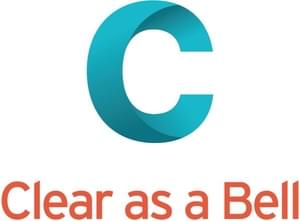Acting upstream
When you're leading people into change, "acting upstream" takes courage and foresight but leads to a smoother, more even current downstream.
What does "acting upstream" mean and how does it apply to you?
Upstream - why should I be interested?
The photo above shows connecting bridges across two rivers where they meet - the confluence, on a calm summer's day in August 2023. Hard to imagine from this idyllic scene that, when I lived nearby, I often saw those two rivers overwhelm the bridges, with whole trees stuck under them and roads flooded, with regular rescues and clearing up.
Upstream, both the rivers are quite long and have little to stop the flow of water when there's excessive rain or run off. Downstream is not much wider than the widest of the two you see here. So when they meet there's more water to carry through a similar space.
What are the options here to reduce the need for rescue? More flood plains perhaps, planting trees, technology to regulate the flow, warning systems... once you start to think about it, you'll have plenty of ideas to explore.
What if you could apply upstream thinking to your change programme to reduce the need to rescue downstream?
Three ideas to reduce the rescues during change

Let's take three, major pitfalls during change - People, context and feasibility.
People
The number one reason change projects stall, fizzle out or even go out in a blaze, is that people have not bought into them. If you've been following the recent story on abolishing railway station ticket offices, you have an example. Too much focus on announcements and not enough on people.
Tip one
Involve the right people from the outset - or even before the outset! Make connections early on. It may seem laborious or too soon but it pays dividends in stacks, with cooperation, quicker communications and decisions later on. Be upstream by listening to critics and people's reservations, which can reveal perspectives you hadn't considered.
Context
Projects can lead to disappointing outcomes because they no longer fulfil their purpose. Things have changed and your project hasn't kept up. It could be the outside context (pandemic, cost of living crisis) or internally (new CEO with new strategy, restructure, less demand). While you may feel protective of your project and methods (and who doesn't?!) sticking to an outdated course will lead to worse outcomes for everyone.
Tip two
Focus relentlessly on the desired outcome your project was set up to achieve. Stay upstream by regularly reviewing the context and your remit, consulting about how what you're doing will give the results needed.
Feasibility
Drawing together people and outcomes can lead to much more likelihood of success. We have heard, over the years, of big IT projects shelved due to escalating costs because no one had factored in, for example, linking to legacy systems or joined up the thinking between departments. Huge amounts of money spent and no viable system at the end.
If you have applied tips one and two - listened to different perspectives and applied the thinking to the desired outcomes, you will have a clear idea of detail. Who and what is needed to implement the change, so it actually gets done.
Tip three
Start upstream by listening early on to your topic experts, your customers, your legal experts or whoever else can advise on the detail of how it will work. There's no downside. On the one had you're more likely to succeed and on the other you can shelve or alter a project before significant time, energy and money have been spent.
What next?
You could start by reading
"Upstream" by Dan Heath.
You can start to implement some of the ideas here.
You can join on one of my free
monthly drop-in sessions by signing up on Eventbrite. You can book a free discovery call with me.
Best of all you can share your experience and learn by joining one of my group #MakingRoom programmes. I bring together a small group to put into practice together the tools and techniques I teach on smoothing the journey of change for you and the people at your organisation.
Find out when the next one starts
